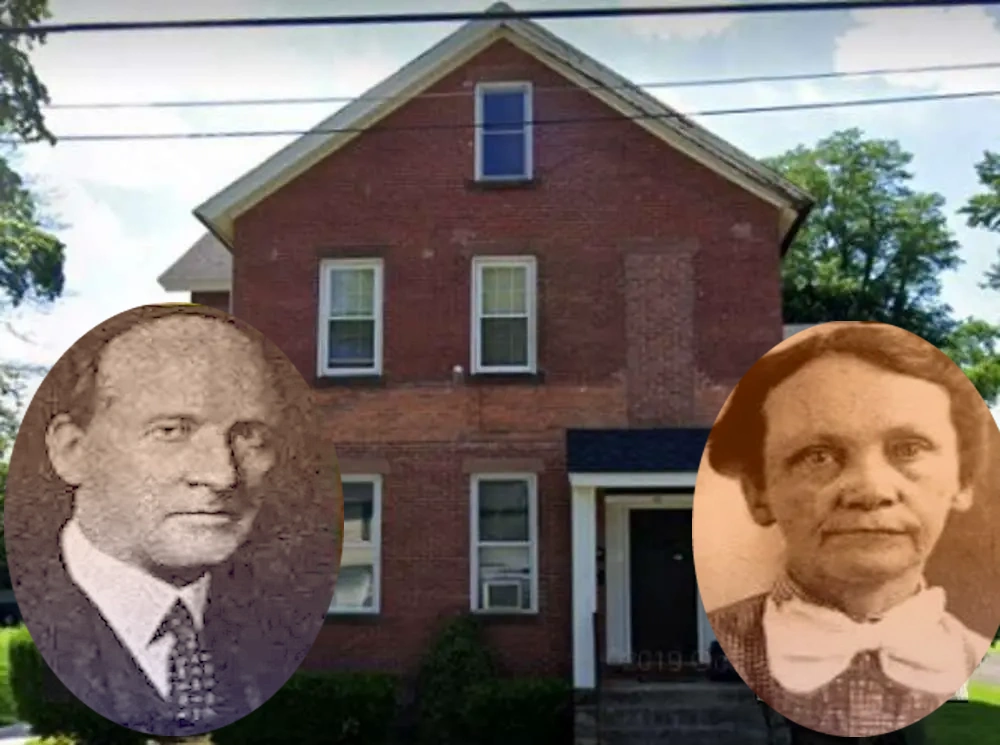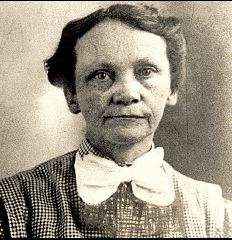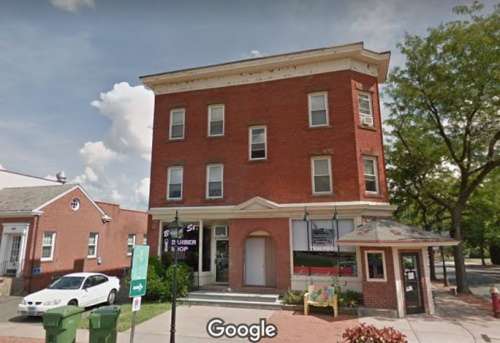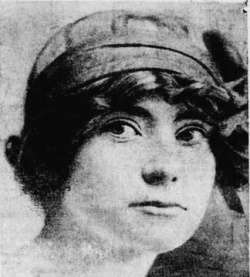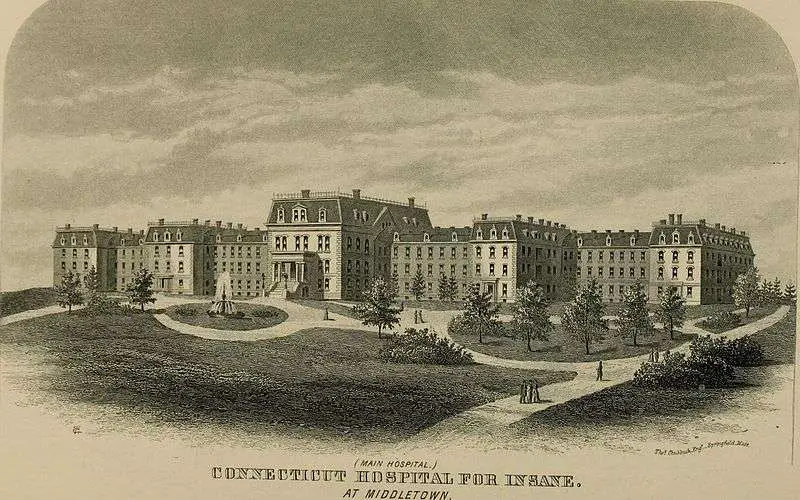On Jan. 10, 1941, Hartford State’s Attorney Hugh Alcorn attended the opening night of the Broadway play, Arsenic and Old Lace. The audience laughed uproariously at the dark comedy about two elderly spinsters who poison lonely old men with arsenic-laced elderberry wine. The New York Times drama critic wrote that it was ‘so funny none of us will ever forget it.’
Hugh Alcorn didn’t find it funny. Not in the least.
As the prosecutor for Hartford County, Alcorn spent years trying to bring to justice Amy Archer-Gilligan, the subject of Arsenic and Old Lace. She had posed as a caring Christian woman while uncaringly murdering as many as 20 people.
And now Amy Archer-Gilligan, notorious serial killer, whiled away her days at the Connecticut Hospital for the Insane in Middletown. There she kept up the pious Christian routine, praying in her chair with a Bible in her lap, wearing a black dress trimmed with lace. Her victims, who had all died horrible deaths, moldered in their graves.
What was funny about that?
Arsenic and Old Lace Prosecutor
Hugh Alcorn was born in 1872 in Suffield, Conn., to Irish parents who had immigrated as children to the United States in 1838. His father served in the Civil War, suffering as a POW in the notorious Andersonville Prison. That left him with an addiction to drink, which led to his death by drowning.
Hugh Alcorn compensated for his father’s inadequacies, studying at the Connecticut Literary Institution (now Suffield Academy) and then reading for the law at the Hartford firm of Case, Bryant and Case. He married, had three sons, ran for the state Legislature and won twice. He built a lovely Colonial Revival house in Suffield. In 1908, the Connecticut Superior Court appointed him state’s attorney for Hartford County. Over his next 34 years in the job, he won a reputation as a tough but fair prosecutor.
In 1914, a woman named Nellie Pierce came to see him and described her suspicions about her brother’s death. Franklin Andrews had been living at the Archer Home for Elderly People and Chronic Invalids in Windsor, Conn. He had seemed in fine health just before he died suddenly of a gastric ailment.
Franklin Andrews
Franklin Andrews, a robust 60-year-old, had paid the proprietress—Amy Archer-Gilligan–$1,000 to take care of him for the rest of his life. Pierce had just seen her brother a few days before Archer-Gilligan called her to say he’d taken ill. Pierce wanted to see him, but Archer-Gilligan suggested she wait.
A few hours after the call, Franklin Andrews died an agonizing death. An undertaker immediately whisked his body away for embalming. When Nellie saw her brother’s body, she was surprised at how well he looked. And then she, her sister and her brother went through his things. They discovered a letter from Archer-Gilligan pressing him for a loan of $500. Andrews had given her the money, and Nellie Pierce demanded it back, according to the Hartford Courant.
She got the money, and she went to see Hugh Alcorn. Alcorn was also visited by his friend, Courant editor Clifton Sherman. Sherman gave him evidence that something was seriously amiss at the Archer Home.
Archer Home for Elderly
The Archer Home was a large brick house at 37 Prospect St. outside downtown Windsor. Alcorn’s investigation revealed that Amy Archer and her husband James had bought it in 1907 after running a similar convalescent home in Newington, Conn.

The site of the Arsenic and Old Lace murders on Prospect Street in Windsor has been broken up into apartments. Image courtesy Google Maps.
James Archer died suddenly of a previously undiagnosed kidney ailment on Feb. 2, 1910. He left Amy, then 36, with their 13-year-old daughter, Mary. Conveniently, Amy had taken out an insurance policy on James just weeks before he died. She would thus be able to keep the Prospect Street house.
As many as 20 residents – she called them ‘inmates’ – lived in the house at any one time. They could pay from $7 to $25 a week, or a flat fee of $1,000 for the rest of their lives. The house doctor, Howard King, later said Amy sometimes herded the inmates together into crowded rooms and let them fend for themselves.
Neighbors on Prospect Street had noticed an unusually large number of deaths in the home. The undertaker always arrived in the dead of night to take away the latest body.
What was going on? Amy was a tiny, pious widow who always carried a Bible and gave generously to St. Gabriel’s Catholic Church. She said she had the bodies removed from the house quickly because she didn’t want to upset the other inmates. But why so many bodies?
Michael Gilligan
In 1913, Amy had married Michael Gilligan, a healthy and hearty widower with a handful of adult children and a hefty savings account. He died on Feb. 10, 1914, just months after their marriage, and he willed his entire estate to her.
Amy Archer-Gilligan covered her tracks cleverly, but not cleverly enough. Michael Gilligan had a friend, Carl Goslee, who wrote obituaries as a freelancer for the Courant. He had written a lot of obituaries about the inmates of the Archer home. Between 1907 and 1916, 60 residents died at the home, 48 within the last five years.
Goslee took his suspicions to Clifton Sherman, his editor, who sent him and another reporter to bring back the death certificates of all who died at the Archer Home.
The obituary writer also went to the W.H. Mason Drugstore (in 2020, the Broad Street Barber and Siam Corner Thai Kitchen). There he learned Amy and her inmates had bought huge amounts of arsenic. Amy claimed she needed the poison for a serious rat problem at the home.
Alcorn’s Investigation
In 1914, the Connecticut State Police was only 11 years old and murder investigation hadn’t developed into the science it is today. That, at least, is one explanation for why it took nearly two years for state police to arrest Amy Archer-Gilligan for the murder of Franklin Andrews.
Toward the end of 1914, an undercover state police officer named Zola Bennett moved into the home pretending to be a wealthy widow. Bennett learned how Amy bilked her residents, either borrowing money from them or asking them to turn over their estates to her in return for lifetime care.
The state police carefully gathered more evidence over the next year.
By May 9, 1916, “We became certain that something was wrong,” Alcorn told newspaper reporters.
“Then we exhumed the bodies and were convinced that it was a case of cool, calculated premeditated murder of inmates of the home,” he said.
Buried Bodies
Alcorn had ordered Michael Gilligan exhumed, and the coroner found arsenic in his body. Though undertakers used arsenic in the embalming process, that couldn’t explain the enormous amount of arsenic in his stomach.
Alcorn also ordered investigators to dig up Franklin Andrews. He wanted it done secretly because he feared Archer-Gilligan would destroy evidence if she knew how close the investigation was coming.
The Courant reported the “eerie tale” began “in a cemetery toolhouse in Cheshire on a spring night in 1916, where Dr. Arthur J. Wolff and a small group of assistants performed an autopsy by the light of a lantern and ‘two pocket electric flashlights’ on the exhumed remains of Franklin Andrews.
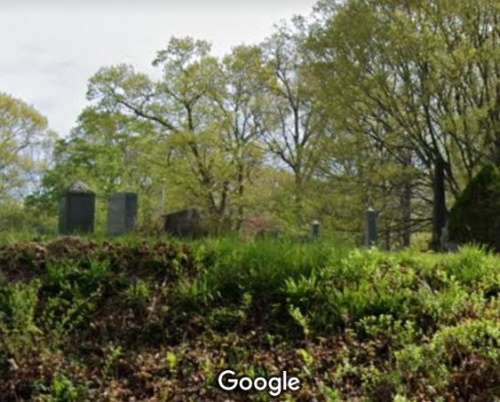
Hillside Cemetery in Cheshire, Conn., where Franklin Andrews was buried (twice). Image courtesy Google Maps.
The former Franklin Andrews, dead two years, rested on a plank placed on two barrels.
Nellie Pierce had joined them, and watched as the doctor determined her brother had died of arsenic poisoning. His death certificate claimed he had died of a gastric ulcer. Howard King, Amy’s house doctor and Windsor’s medical examiner, had certified Andrews’ death.
Alcorn ordered three other autopsies. In the end, he decided to charge Amy Archer-Gilligan with five counts of first-degree murder. Police, though, believed she killed at least 20 inmates by giving them elderberry wine laced with arsenic.
One victim, Charles Smith, had withdrawn his life savings, more than $3,000, and given it to her before he died at 87. Another, Alice Gowdy, had paid $500 to move into Franklin Andrews’ room just a few days after his death. She died the same way he did six months later.
Investigators also determined Amy Archer-Gilligan had forged Michael Gilligan’s will leaving everything to her.
Arsenic and Old Lace Arrest
On May 18, 1916, Hugh Alcorn and state police officers – including Zola Bennett, who had since moved out – visited Amy Archer-Gilligan at the home.
Under questioning, she insisted on her innocence.
“I am a poor, hard-working woman and I can’t understand why I am persecuted as I have been during the last few years,” the Courant reported she told police. “This is a Christian work and one that is very trying as we have to put up with lots of things on account of the peculiarities of the old people.”
The police carried away papers and bottles with labels on them, the Courant reported. More than a year later, on June 19, 1917, her month-long trial began. Alcorn, who led the prosecution, brought in medical experts to testify that her victims died of poison, and they had ingested it while alive.
It took a jury 15 minutes to find Amy Archer-Gilligan guilty.
The judge sentenced her to death by hanging. But she appealed, and received a new trial in 1919. Her daughter Mary testified to her mother’s innocence, revealing that she had an addiction to morphine.
During the trial, Amy kept repeating the same phrase, “I want to go home.” Then, finally, she made a plea. She’d admit to guilt on one count of second-degree murder. Hugh Alcorn accepted the bargain, and she went to the Wethersfield State Prison, supposedly for life.
In 1924, officials declared her temporarily insane and sent her to the state insane asylum in Middletown, Conn. Her medical records are sealed, and so the only clue to her mental state are reports that she played funeral music on the piano when no one had died.
Her temporary insanity lasted 38 years, and she died there on April 23, 1962.
The Rest of the Story
Hugh Alcorn continued prosecuting criminals, 15,000 during his career, to be exact. Meanwhile, a playwright named Joseph Kesserling asked Alcorn to help him write a play about the Amy Archer-Gilligan murders. Alcorn gave him access to court documents.
Kesselring had the good fortune to win the sponsorship of talented producers Howard Lindsay and Russel Crouse, according to Gregory William Mank in The Very Witching Time of Night: Dark Alleys of Classic Horror Cinema. Mank called the original version, titled Bodies in the Basement, a tasteless mess, ‘almost Springtime for Hitler-style awful’ and devoid of humor.
Lindsay and Crouse quietly rewrote the play, turning Amy into two maiden aunts, giving Kesselring credit and renaming it Arsenic and Old Lace. They did, though, share royalties with Kesserling.
The audience loved the black humor, with lines such as, “Insanity runs in my family. It practically gallops.” Or, “One of our gentlemen found time to say ‘How delicious!’ before he died.”
It ran for 1,400 shows. Hugh Alcorn, of course, didn’t find it funny. He retired the next year, and died in 1955 at the age of 82.
One son, Hugh Meade Alcorn, served as Republican leader of the Connecticut General Assembly in the 1940s and chairman of the Republican National Committee in the late 1950s. Another son, Howard Wells Alcorn, served as Chief Justice of the Connecticut Supreme Court. A third son, Robert Hayden Alcorn, wrote a number of books, including No Bugles for Spies and a history of Suffield, Conn.
In 1944 Frank Capra turned the play into the film classic starring Cary Grant.
Images: Arsenic and Old Lace cover, By Source, Fair use, https://en.wikipedia
With thanks to Devil’s Rooming House: The True Story of America’s Deadliest Female Serial Killer By M. William Phelps and Speaking Ill of the Dead: Jerks in Connecticut History by Ray Bendici. This story was updated in 2024.
